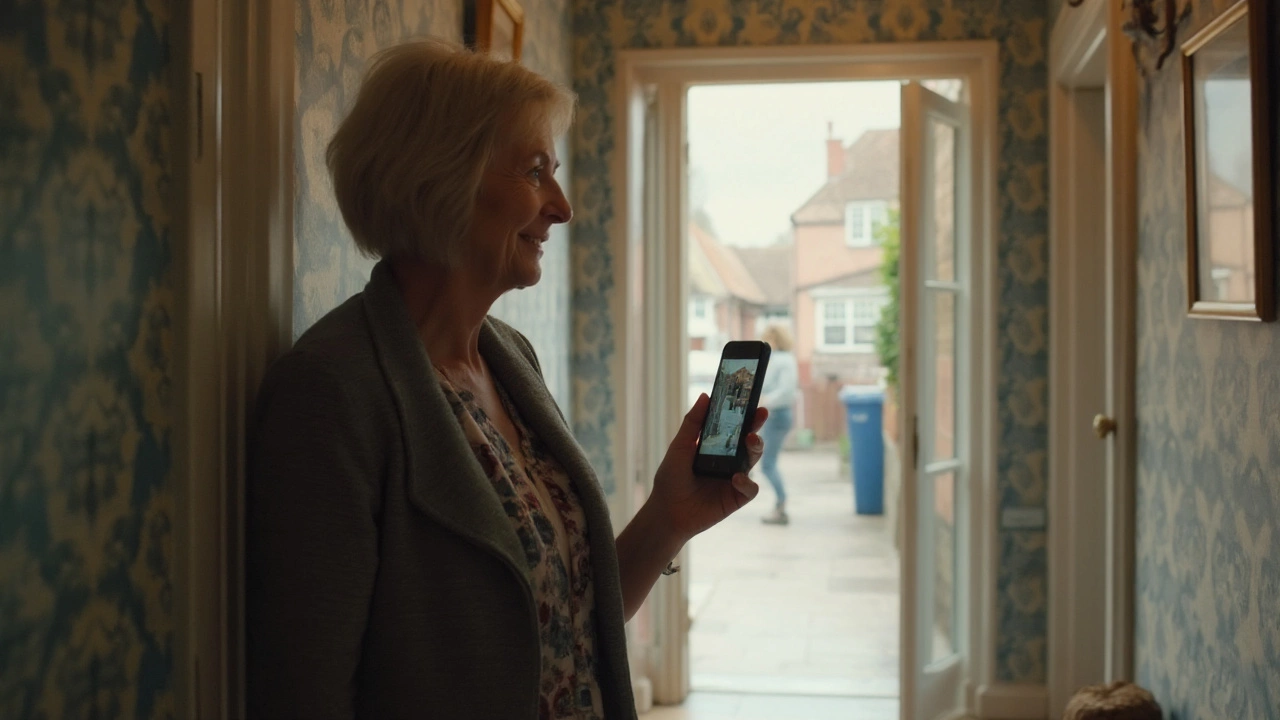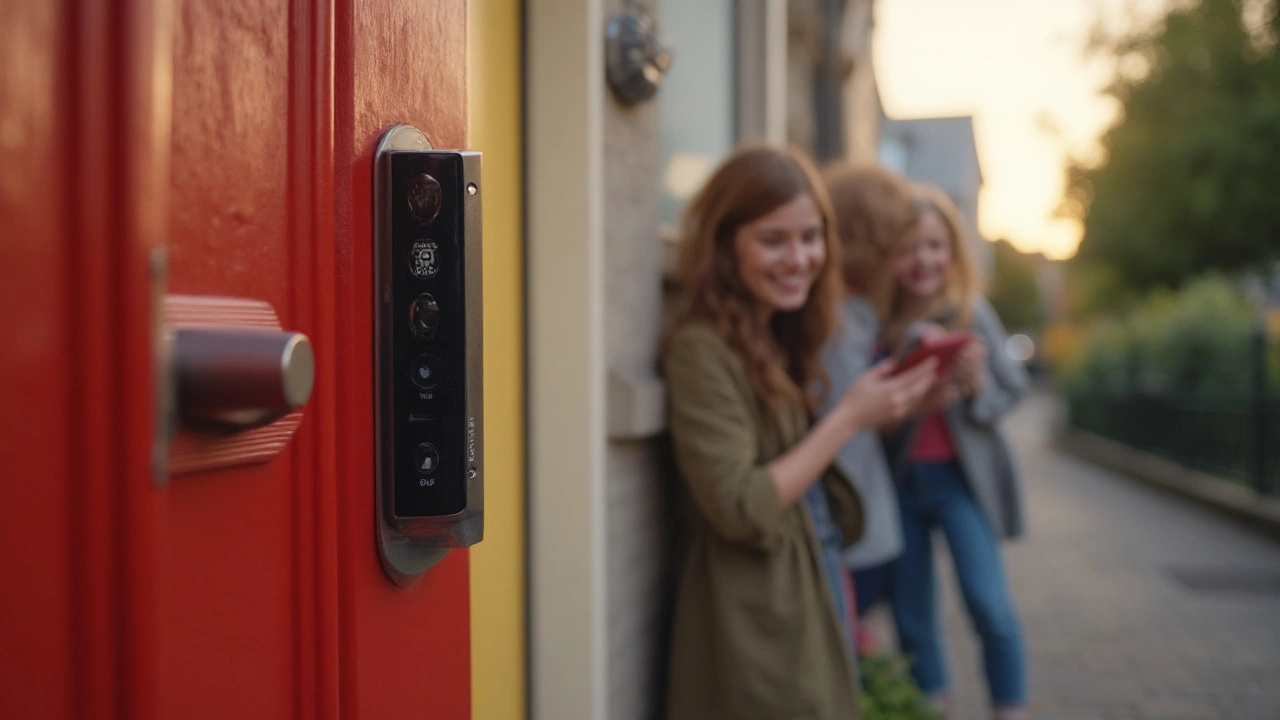Imagine this: It’s noon on a Tuesday and you’re halfway into a Netflix binge. Suddenly you get a notification—there’s a stranger at your front door. They're wearing a hoodie, looking a little dodgy, and they’re fiddling with your mailbox. But instead of peeking through the blinds, you open your phone and check your doorbell camera. You see their face in HD, hear them talking to themselves, and if you want, you can even tell them to get lost—without ever getting off the couch. This isn’t sci-fi, it's what thousands of homeowners use every single day. But here’s the real question: which doorbell security system actually deserves a place by your front door?
Why Video Doorbells Are Changing Home Security
Doorbell cameras have come a long way from those grainy ‘90s intercoms. The latest models offer high-definition video, night vision, two-way audio, and even facial recognition. Just last year, more than 18% of new homes in the US were built with a video doorbell pre-installed—that’s wild when you think about how new this tech is. But what’s driving the switch? Safety is a big one, obviously. Package theft—yep, “porch piracy”—jumped 20% in 2024 according to SafeHome’s survey. And it’s not just theft: friendly faces, deliveries, nosy neighbors, everything shows up on your feed. With motion alerts, you don’t have to monitor the footage; you just get a ping when something happens.
Convenience is right up there, too. With smart integrations, you can link your doorbell to Alexa, Google Home, or even your smart locks. Someone delivering groceries? Let them into your mudroom from your phone. Or maybe you want to yell at your teenager to grab the dog when they get home. Video doorbells make that as easy as texting. One neat detail—some smart doorbell sellers reported a 50% drop in false alarms once they added AI-powered notifications that distinguish between people, cars, and animals. Less noise, more value.
It’s not all sunshine, though. Security cameras can freak people out about privacy. That's why many top brands now offer features like customizable privacy zones—so you don’t accidentally record your neighbor’s barbecue next door. Some even have encrypted cloud storage, so you’re not accidentally live-streaming your front porch to the world. If you’re paranoid (or just careful), look for models with two-factor authentication—it’s becoming pretty standard and helps protect your feeds.
Top Video Doorbell Brands Compared
Let’s cut through the marketing and look at the options. The top names you'll see on everyone’s lips: Ring, Google Nest, Arlo, Eufy, and Wyze. Each one has hardcore fans, but here’s what actually makes them different:
- Ring Video Doorbell Pro 2: The OG and still king for simple, solid performance. 1536p HD video, radar-powered motion detection, and crazy accurate parcel alerts. Integrates seamlessly with Alexa, but can work standalone. Big catch? Most features need a subscription—no cloud, no playback.
- Google Nest Doorbell (Battery, 2nd Gen): Superb at recognizing faces (if you want that). The interface is slick, and it works with Google Home, so if you’re already in their ecosystem, it just fits. There’s free three-hour event history, but longer storage requires Nest Aware. Also, it runs on batteries or wired power—super flexible.
- Arlo Essential Video Doorbell: Ultra-wide field of view (180°), head-to-toe video, and heaps of custom settings. Arlo Smart gets you advanced notifications and a security system that links with other Arlo cams. Lower price, but the app isn’t always the fastest.
- Eufy Video Doorbell Dual: Unique pitch: two cameras—one for faces, one for packages. Local storage is free (so no monthly fees!) and privacy features are strong. The video is crisp, though the app feels clunky sometimes.
- Wyze Video Doorbell Pro: Budget pick with surprising punch. 1440p HD, simple setup, and free basic video cloud storage. Not as many advanced motion options, but for price? Hard to beat.
Now, here’s a quick side-by-side. Don’t just trust the bullet points—look at the data and match it to your needs.
| Feature | Ring Pro 2 | Google Nest | Arlo Essential | Eufy Dual | Wyze Pro |
|---|---|---|---|---|---|
| Video Resolution | 1536p HD | 960x1280 | 1536x1536 | 2K (2560x1920) | 1440p HD |
| Field of View | 150°x150° | 145° | 180° | 160° | 150° |
| Audio | Two-way | Two-way | Two-way | Two-way | Two-way |
| Storage | Cloud (pay) | Cloud (pay/free) | Cloud (pay) | Local (free), Cloud (pay) | Cloud (free/pay) |
| Smart Home Support | Alexa | Google Home | Alexa, Google | Alexa, Google (limited) | Alexa, Google |
| Subscription Needed? | Yes for best | Yes for best | Yes for best | No (local) | Not strictly |
| Retail Price (approx.) | $170 | $180 | $130 | $200 | $94 |

What Really Matters: Features You’ll Use Every Day
Not every feature sounds cool on paper but ends up genuinely useful under real-life stress. Here are the ones that have the biggest impact, based on what homeowners actually rave about (and complain about) online:
- Smart Alerts: AI may sound like marketing fluff, but it really works. Instead of buzzing your phone every time a leaf blows by, smart detection picks out actual humans, packages, or even faces. Eufy’s “Pet Detection” saves dog owners from constant pings—no other major brand nails it like they do.
- Multiple Power Options: Battery versus wired is a biggie. Batteries are easy for renters, but they need charging every couple months—annoying? If you’re settled in, go wired and forget about maintenance.
- Privacy and Encryption: With more hacks hitting the news (remember the big Ring leak in 2023?), encrypted storage isn’t just a fancy term. Eufy and Google heavily encrypt your video, but you’ll still want to use strong, unique passwords and always enable two-factor authentication.
- Instant Notifications: Arlo and Ring are leaders for super-fast push alerts. Lags can ruin the point of having a doorbell cam. Wyze sometimes lags a bit on busy Wi-Fi, but is fine for lighter users.
- Easy App Controls: A few brands pile on overwhelming menus and options. Google and Wyze shine for clean, quick mobile controls (great for anyone less tech-savvy).
- Integration with Other Devices: Think about your smart home. Alexa households will love Ring. Google fans should stick with Nest. Mixed tech families can go with Arlo or Eufy for flexibility, but you might lose some advanced features.
- Dual Cameras: Most doorbells just show faces; only Eufy gives you a second camera for dropped-off packages. Crucial if porch pirate activity is high in your area!
An easy step: Before buying, scroll Amazon reviews or Reddit threads from the last six months. Look for mentions of lag, missed recordings, or poor support—those pain points matter more than theoretical image quality.
Choosing the Right Doorbell Security System for Your Home
Here's where you bring it all together. Step one: Figure out your house setup. Are you renting or do you own? Not every landlord loves their tenants drilling for wires, so battery-powered models like the doorbell security system picks from Wyze or Google might fit better. But if you can go wired, you’ll pretty much never have to think about it again.
Second, what's your Wi-Fi game like? All these doorbells live and die on your connection. If your router is two floors away, you might need a Wi-Fi booster. Dropped signals mean missed footage, and that’s useless when someone’s actually at your door. If you want to keep things local, Eufy stands out—no cloud needed, and your data never leaves your house. For super privacy, you can even store footage on your own NAS if you’re nerdy enough to set it up.
Next, weigh the true cost. That $94 Wyze model sounds sweet, but some brands charge $3 to $12 per month for cloud storage and smart alerts. Over two years, that budget buy can end up more expensive than a pricier Eufy that’s free from fees. Pro tip: ask yourself how long you want to keep your video clips. Package snatched? You’ll want a few weeks of history to pick out the thief. Otherwise, three days of free cloud might not cut it.
If you live somewhere busy—city block, lots of walkers, dog-walkers, delivery chaos—motion zones are your best friend. Draw lines on your phone to ignore sidewalks, so you only get pings for your porch. The latest AI knows the difference between your neighbor’s cat and a late-night visitor, but you’ll want a system that lets you fine-tune alerts or you’ll end up just turning them off in frustration.
Depend on smart home gadgets? Match the doorbell to your system. Ring and Alexa play best together, Nest works with Google, but if you’re somewhere in between, Arlo offers the most flexible integrations, even with basic Apple HomeKit support for those in the Apple camp. Eufy also lets you skip the cloud—huge for folks who hate subscriptions or love privacy.
Bottom line: The "best" doorbell isn’t the flashiest model or even the one with the most five-star reviews. It's the one that fits your house, your tech setup, your routines, and your privacy comfort level. Ask yourself: Will you use voice commands? Do you travel often? What’s your budget for cloud? Nail those answers and the right choice pretty much picks itself.

